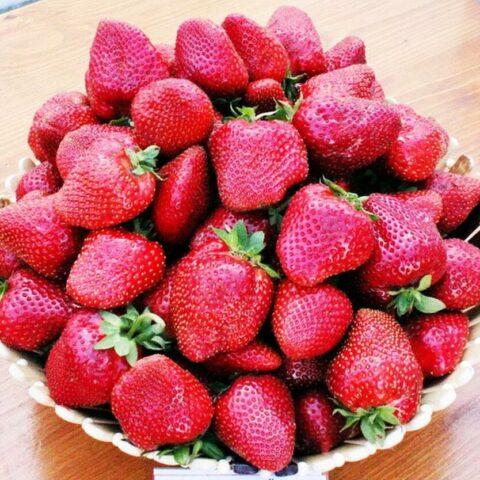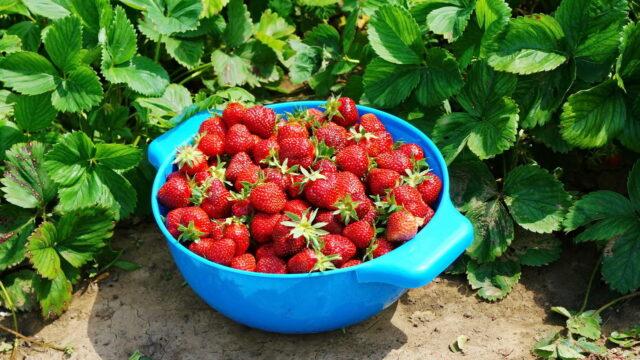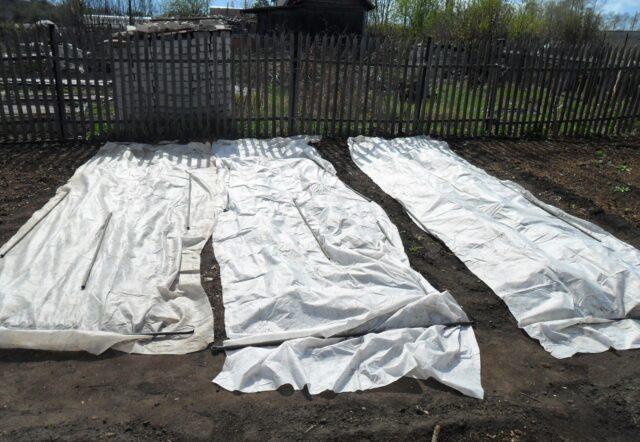Content
A home plot without a strawberry bed is an extremely rare occurrence. This berry is especially popular with gardeners. Breeders have bred many of its varieties and hybrids. Promising new items with improved characteristics appear annually. These include the Primi strawberry. They began to grow it quite recently, but the first experiments in fruit nurseries and garden plots confirm the varietal characteristics declared by breeders, first of all - large-fruited and excellent taste.
When the strawberry is bred Accept
Strawberry Primi (Premy) bred in Italy by specialists of the Consortium of Italian nurseries CIV (Consorzio Italiano Vivaisti). Among his successful achievements are the varieties Clery and Elsanta, well known to Russian gardeners.
This organization, highly respected by breeders all over the world, with a half-century history, specializes in the development of new varieties and the production of certified "mother" plants. They appreciate it for its consistently high quality and striving for constant updating of the assortment.
The joint venture includes three of the largest Italian nurseries - Vivai Mazzoni, Salvi Vivai and Tagliani Vivai. In the first of them, the Primi strawberry was created. Since 2018, the variety has been tested at sites in various regions of Russia, two years later it went on the free sale. It has not yet been included in the State Register, but the certification was successful.
Strawberry variety description and characteristics
The varietal characteristics of the Primi strawberry declared by the originator look like something incredible. For obvious reasons, there is still no large practice of its cultivation in different regions of Russia, but the first experiments of amateur gardeners to a large extent confirm the numerous advantages of the variety.
Characteristics of fruits, taste
The average weight of Accept berries is 25-40 g. According to breeders, in optimal conditions and with proper care, their weight can reach 70-100 g, but such indicators are hardly achievable for amateur gardeners. The fruits are one-dimensional, there are no very small berries on the bushes.
The shape is elongated-conical, the largest specimens are comb-shaped. Skin with a glossy sheen, evenly colored in dark scarlet or cherry color. The pulp is bright red, firm, but juicy and tender.
The taste of Strawberry Accept is very sweet, but not bland, with a subtle sourness. Professional tasters rated it 4.5 out of five.

Ripe berries have a very pleasant "nutmeg" aroma, typical for wild strawberries, light and unobtrusive
For the ripening of such fruits, powerful plants are needed. Therefore, the bushes at Primi for strawberries are tall, with a developed root system, but relatively compact, slightly spreading. The foliage is medium, the leaves are large, dark green.
Ripening terms
Take - mid-early strawberries. The first "wave" of the harvest falls on the tenth of June. Fruiting lasts about a month. Its uniformity is noted. The last fruits do not become smaller, they are characterized by the same size and shape as the first ones.
When compared with the varieties of this manufacturer well-known to Russian gardeners, the Primi strawberry ripens 3-4 days later than Clery and 5-7 days earlier than Elsanta.
Strawberry yield
On average, an adult Primi bush yields 1-1.5 kg of berries per season. Breeders declared higher rates - 2.5-3 kg, but for this the plants require ideal or similar conditions.

The yield of Strawberry Accept depends on many factors: first of all, it is the climate and the quality of care
Growing regions, frost resistance
Strawberry Primi is a variety specially created for cultivation in temperate climates. It is declared by breeders as the most suitable for cultivation in the countries of continental and Eastern Europe and the European part of Russia. This provides cold resistance up to - 25 ºС.
However, according to the originator, the variety has the ability to adapt to the effects of unfavorable environmental factors. Therefore, it is very likely that it will "take root" in the Urals, Siberia, and the Far East. Of course, in the local climate, Primi strawberries will need careful shelter for the winter. And you can not wait for record high yields and large fruits obtained in optimal conditions for it.
Disease and pest resistance
Strawberry Primi has good immunity. This applies to all diseases typical of the culture. Pests also do not show much interest in it, even if they affect other varieties of bushes growing in the neighborhood.
Advantages and disadvantages of the variety
The Primi strawberry variety has many undeniable advantages:
- Early terms of fruiting and its "elongation". The latter provides a high yield.
- Uniformity and presentability of fruits. This is one of the most significant factors for those who grow strawberries for sale. Such berries are definitely not a shame to serve.
- High productivity. Planting strawberries Accept, you can save space in the garden. This is important for the owners of the standard "six acres".
- Excellent taste and aroma. Even professional tasters confirm these characteristics. Moreover, the typical "strawberry" smell remains after heat treatment.
- Versatility of appointment. The berries are suitable both for fresh consumption and for any homemade preparations. You can use them as a filling for baking, freeze.
- Density of the pulp. This provides the Primi with very good keeping quality (up to five days) and transportability for strawberries. During transportation, the berries do not crumple, do not lose their "presentation".
- Good immunity. Especially note the resistance of Strawberry Primy when grown in test variety plots to various types of spots, mold, root rot and strawberry mites.
- Lack of care. It includes only the standard agronomic measures required for any variety of strawberries.
- Cold hardiness sufficient for central Russia. Prymi also tolerates recurrent frosts well: the bushes quickly recover, this does not affect the harvest of the current season.
- Drought resistance. Strawberries in a short-term drought, of course, will not disappear, and the berries, moreover, do not shrink. But it is still better to provide her with regular watering.

Strawberry Primi is suitable for both those who grow berries for sale and for "individual use"
As the disadvantages of strawberries, Accept the following points:
- In the first two seasons after planting record harvests, you can not wait. Abundant fruiting will be only in the third season.
- Landings need regular updates. It is recommended to "rejuvenate" them once every four years. Although, according to the originator, with proper care, this variety can bring abundant harvests for 5-6 years.
- Accept strawberries must be regularly fed with high-quality fertilizers. This is logical: high yields and large berry sizes greatly deplete the bushes.
Reproduction methods
Strawberry Accept is a hybrid. Therefore, it is pointless to try to grow new plants from seeds: the “offspring” will not inherit the varietal characteristics of the “parent”. In any case, such a laborious method is not popular with gardeners.
Propagated by Primi methods typical for most strawberry varieties - rooting "whiskers" and dividing the bush. "Mustache" is formed on it a little, but enough. There will be no shortage of planting material.

Only adult (from three years old) bushes are suitable for dividing; each fragment obtained must have at least one rosette and roots
Planting and leaving
Since Primi strawberries are intended for growing in temperate climates, it is best to plant them in the spring. Despite good frost resistance, in the fall, seedlings may not have time to adapt to new living conditions and take root. Then they will definitely not survive the winter. There is also a real risk of being late with planting: the first frosts sometimes come suddenly, they are destructive for young seedlings.
The following requirements are imposed on the place of planting strawberries:
- Good illumination, but without direct sunlight during the hottest part of the day. For this period, it is desirable to provide plantings with "openwork" penumbra.
- Protection from cold drafts, north wind.
- The site should be flat, and a place closer to the top of a gentle hill is also suitable. Steep slopes and lowlands are immediately excluded.
- The soil is nutritious, but light (loam or sandy loam), with a neutral pH.
- Groundwater located at least 60 cm below the surface of the earth.
What kind of care is required for plants:
- Watering. Should be regular but moderate. This variety does not like excessive soil moisture. If it is hot outside and it is not raining, take watering strawberries every 2-3 days. The rate for an adult plant is 4-5 liters. The ideal option is drip irrigation. Sprinkling will not work (drops of water fall on flowers, ovaries, ripening berries).
- Fertilization. Primi strawberries are fed four times per season: at the very beginning of the active growing season, in the budding phase, at the end of fruiting and in the last decade of August. It is best to use compound store fertilizers designed specifically for strawberries. The variety also reacts well to natural organic matter, but such dressings are not able to provide plants with all the macro- and microelements they need in the required volumes, the life of the bushes is reduced.

In the spring, fertilizing with a nitrogen content is applied, then phosphorus and potassium are required for the ripening of fruits and preparation for winter.
The good immunity of Primi strawberries allows you to do without preventive treatments with fungicides and insecticides during the season. Gardeners who still want to insure themselves can use folk remedies:
- planting marigolds, garlic, and other spicy herbs and plants with a pungent smell around the perimeter of the garden;
- scattering dry mustard, sifted wood ash over the soil surface;
- replacement every 1.5-2 weeks of ordinary water for irrigation with a light pink solution of potassium permanganate.

The beds are mulched with strawberries, most often with straw, this is also due to its English name - strawberry
Preparing for winter
When grown in the south of Russia, in a subtropical climate, Accept strawberries do not need a special shelter.In the middle lane, especially if a harsh and little snowy winter is expected, the garden bed in the fall, after all the necessary sanitary measures (pruning, cleaning all vegetable and other debris), mulch the bases of the bushes with humus or peat. The entire bed is covered with spruce branches, sawdust, fallen leaves, dry grass, straw.
From above it is tightened with any covering material in 2-3 layers. As soon as enough snow falls, the bed is thrown from above. During the winter, it is advisable to "renew" the snowdrift several times, simultaneously breaking the hard crust of the infusion on the surface. Otherwise, plants that do not receive enough oxygen may die.

In the spring, the shelter from the strawberry beds is removed as soon as the thaw begins, otherwise the roots of the plants undergo, they die
Conclusion
Bred in Italy, the Primi strawberry is specially designed for growing in temperate climates. The variety is completely new, therefore it cannot yet boast of wide popularity among Russian gardeners, but it has all the prerequisites for this. The berry very successfully combines excellent taste, presentable appearance and large size of the fruit with the "vitality" of the plant, which has good immunity and is not capricious in its care. Judging by the reviews and photos of gardeners, the description of the Primi strawberry variety given by the breeders is quite true. Of course, the variety also has disadvantages, but there are far fewer of them than advantages.
Reviews of gardeners about the Primi strawberry variety








